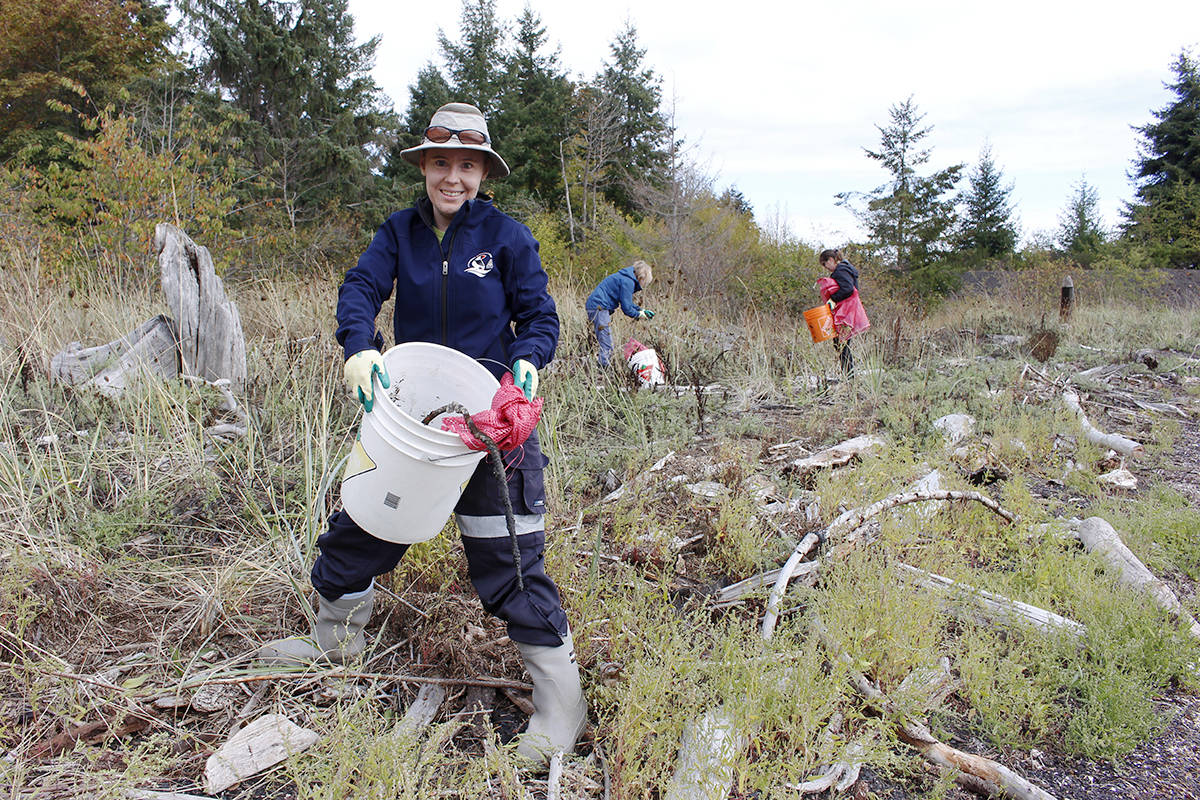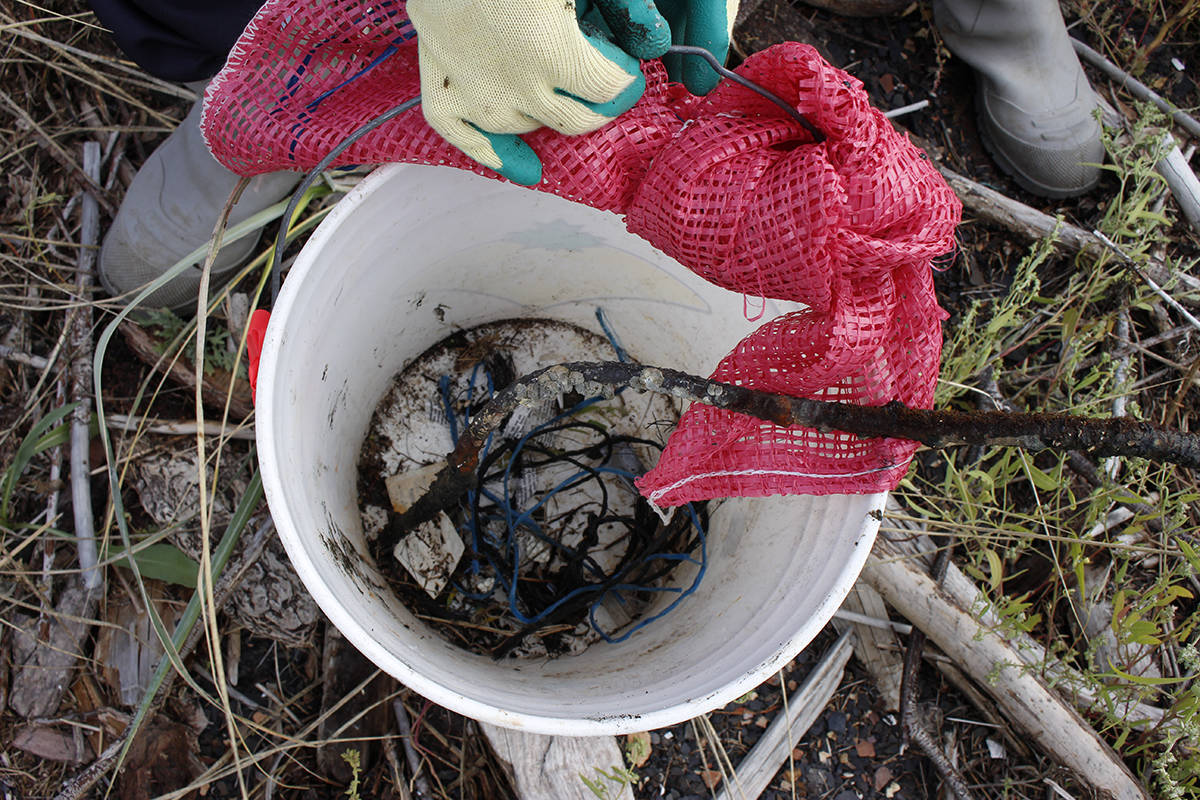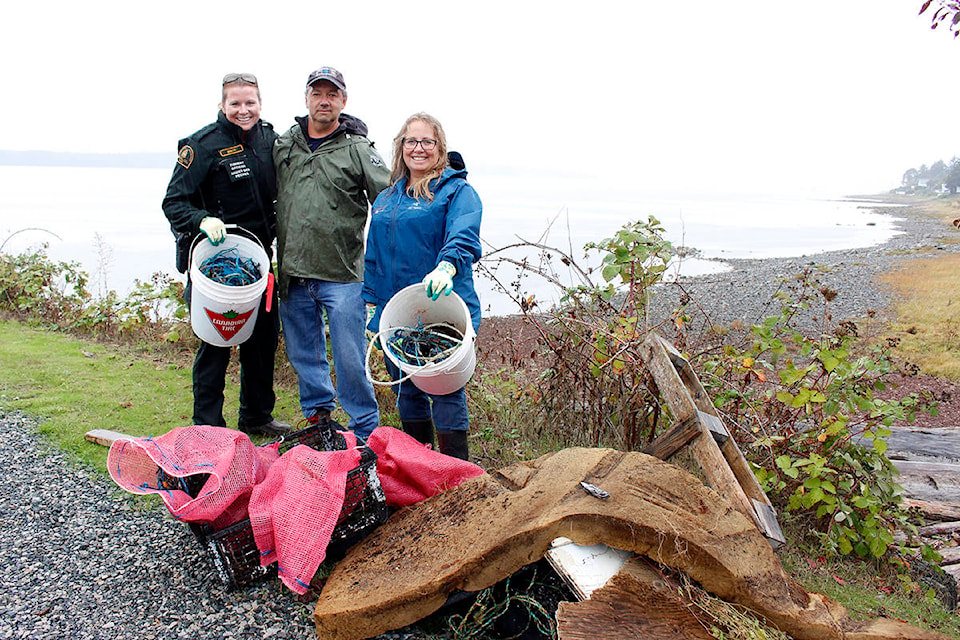Every person who lives near the ocean or uses the water has a responsibility to keep it clean, says Shelley Jepps, senior shellfish and freshwater aquaculture biologist with the Department of Fisheries and Oceans.
From Sept. 14 to Sept. 22, the DFO, along with the BC Shellfish Growers Association, the Association of Denman Island Marine Stewards and the World Wildlife Fund, has been organizing cleanups on beaches along the Baynes Sound. These cleanups are not only beneficial to keep beaches free of debris, they’re also meant to raise awareness of the impacts of marine debris.
“You know on social media, you see the entangled marine mammals and the turtles with straws stuff in their nose, but it goes beyond that,” said Jepps. “It’s the things that you can’t see as well - maybe chemical components of impacts of marine debris that are not so apparent to the general public.”
Virginia East lives in the Comox Valley and volunteered to help with the Big Beach Cleanup at Union Bay on Wednesday.
“I have seen the impacts of plastics in rivers and stream systems and it’s disgusting,” she said, adding that it is very disheartening to see a large amount of plastic and other debris in the water and on the shore.
| Virginia East was a volunteer with the cleanup and says she has a soft spot for aquaculture and is passionate about keeping oceans and rivers clean. Photo by Jolene Rudisuela |
Chris Marrie, aquaculture biologist with the DFO, says ocean debris affects us all, and everybody, including the shellfish industry, recreational vessels and beachgoers, needs to do a better job of keeping our oceans clean.
“Baynes Sound is a pretty heavily used area by tourists and beachgoers as well as the shellfish aquaculture industry, so… quite a bit of mixed debris washes up on beaches and unfortunately quite a bit of that is plastic and styrofoam,” he said.
According to Marrie, after only two cleanup days, they had already accumulated approximately 40 cubic yards of plastic and styrofoam.
“Half of the 40 cubic yards over the first two days have been attributed to the shellfish industry and the other half is from derelict, abandoned recreational vessels, beachgoers - there’s the odd flip-flop and tires and that sort of stuff,” he said.
| Soon after starting the cleanup at the Union Bay boat launch, Virginia East found duct tape, rope, a water bottle, a metal rod and glass. Photo by Jolene Rudisuela |
Zac Waddington, lead aquaculture veterinarian for the Pacific region says the DFO is making tangible efforts to rectify ocean debris, and they are working on coming up with long-term solutions to reduce the amount of waste getting into the ocean.
“There is some consideration for making it a mandatory measure sometime in the future that [shellfish farmers] will not be allowed to use polystyrene floats,” he said. “The reason being is that the friction as a result of water movements, especially with storms, they kind of just shed the particles into the environment.”
Once in the water, those particles are nearly impossible to get out and can make their way into shellfish as they filter feed, says Waddington.
The DFO has put in place the BC Shellfish Aquaculture Debris Strategy and Action Plan which Jepps says is a proactive approach to dealing with ocean debris. This includes education and public engagement components, as well as inspections and surveillance of aquaculture practices.
“We’re exploring options like administrative penalties, perhaps seeing if there’s policy that can be developed to help move away from the use of some of the more commonly found shellfish aquaculture debris items - are there alternatives to that,” said Jepps.
As well, all shellfish farmers are required to have licenses, which include conditions surrounding anchoring anti-predator netting and equipment to prevent the loss of gear in the water.
As for the debris collected through the cleanups, Marrie says as much of it will be recycled as possible. The good plastic and styrofoam will be sent off to be repurposed as consumer packaging or used to make fuel.
Around 160 people are participating in this year’s Baynes Sound cleanup, including community volunteers, DFO employees, members of the BC Shellfish Growers Association, ADIMS and WWF. Marrie is heartened to report they have found less debris so far this year compared to last year.
The Big Beach Cleanup will continue on Sept. 21 at 12:30 p.m. at Buckley Bay and on Sept. 22 at 9:30 a.m. at Deep Bay. For more information, visit https://bit.ly/2NELApZ
jolene.rudisuela@comoxvalleyrecord.com
Like us on Facebook and follow us on Twitter


